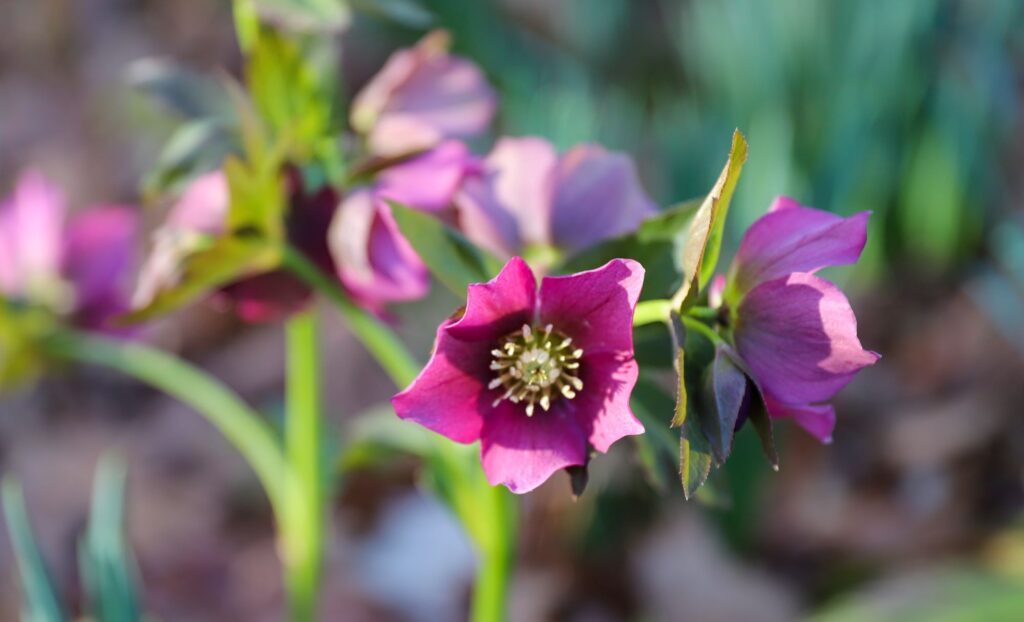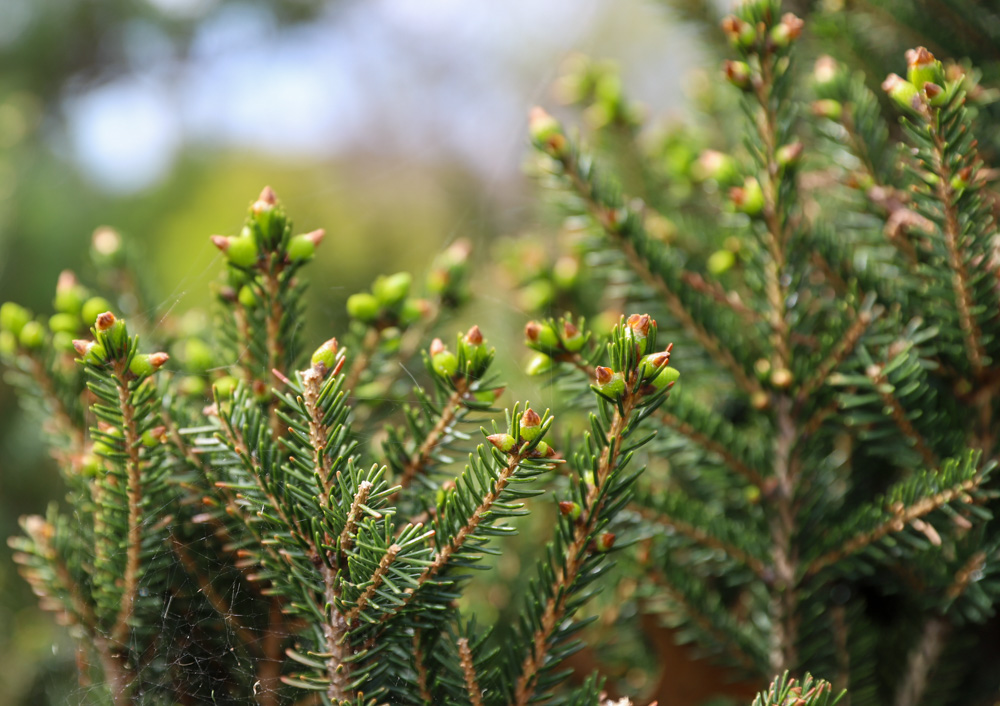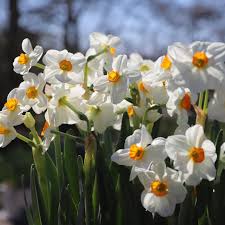
As winter fades, the Midwest quietly brightens with the arrival of spring ephemerals. These short-lived perennial plants are some of the earliest plants to bloom in our area. Spring ephemerals take full advantage of the fleeting window between the thawing ground and the arrival of dense tree canopies.
But what exactly are spring ephemerals, and why are they so special? Let’s dive into their unique characteristics and highlight a few of the Midwest’s most beloved varieties, many of which you can find on the Powell Gardens grounds.
What Are Spring Ephemerals?
Spring ephemerals are perennial plants that grow, bloom, and set seed early in the spring before retreating underground for the rest of the year. These plants thrive in deciduous woodlands where sunlight is abundant in early spring before trees leaf out. Their brief lifecycle makes them vital to the ecosystem—they provide an essential source of nectar and pollen for early-emerging pollinators.
The term “ephemeral” refers to their fleeting nature. Once their job of flowering and reproducing is complete, their foliage dies back, leaving little trace of the plant until the following spring.
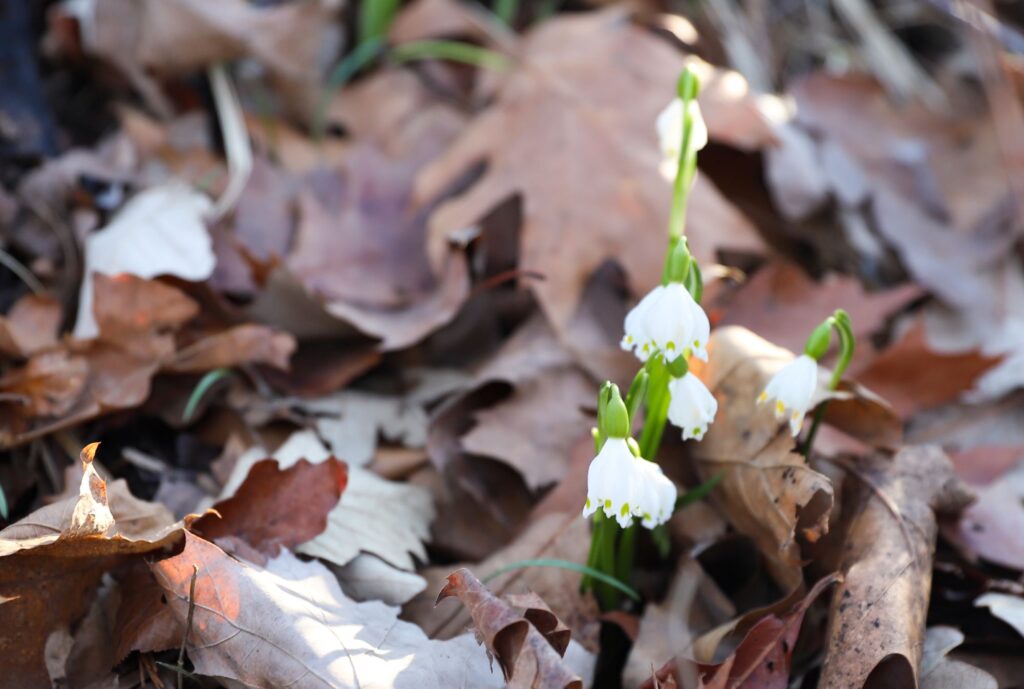
Midwest Spring Ephemerals Guide
Look around you! Use this guide to learn about the spring ephemerals you may encounter in the Midwest. These plants thrive in naturalized woodland settings and are cherished for their delicate beauty and ecological importance.
Snowdrops (Galanthus spp.)
Snowdrops are often the first sign of spring, sometimes blooming even before the last snow melts. With their white flowers and a touch of green at the base of each petal, these hardy bulbs are a welcome sight after a long Midwest winter. Snowdrops thrive in well-drained soil and look stunning when naturalized in clusters under trees or along pathways.
Hellebores (Helleborus spp.)
Also known as “Lenten roses,” hellebores bring a touch of elegance to early spring gardens. Their cup-shaped flowers range in color from creamy white to deep purple, often with speckled or double-petal varieties. While not true ephemerals (their foliage persists year-round), hellebores share the early-blooming trait and are beloved for their deer-resistant and shade-tolerant qualities.
Virginia Bluebells (Mertensia virginica)
With bell-shaped flowers that transition from pink buds to sky-blue blossoms, Virginia bluebells are a Midwest springtime favorite. These plants create a stunning sea of color when grown in large groups. After their blooms fade in late spring, their foliage dies back entirely, making room for summer plants.
Trilliums (Trillium spp.)
The iconic three-petaled flowers of trilliums make them a standout among spring ephemerals. Native to woodlands, they come in shades of white, red, and yellow, depending on the species. Trilliums are slow-growing and can take years to bloom from seed, but their beauty makes them well worth the wait.
Dutchman’s Breeches (Dicentra cucullaria)
Named for their resemblance to tiny pairs of trousers hung on a line, Dutchman’s breeches are whimsical woodland plants with delicate, fern-like foliage. Their white, pantaloon-shaped flowers provide an early source of nectar for pollinators.
Bloodroot (Sanguinaria canadensis)
Bloodroot is a true ephemeral with striking white flowers that last only a few days. (Its deeply lobed leaves persist slightly longer.) The plant gets its name from the red sap in its roots, historically used by American Indians for dye and medicinal purposes.
How to Spot Spring Ephemerals at Powell Gardens
At Powell Gardens, you’ll find many of these springtime treasures scattered throughout our woodland areas and naturalized garden beds. Our favorite place to spot these plants is in the David T. Beals III Woodland & Stream Garden. Walk along shaded trails and look for patches of soft green foliage and delicate blooms peeking through the mulch. (Get adventurous! The “secret trail” in this garden is a truly great spot for peeping ephemerals.)
Ephemerals are often tucked beneath taller plants or growing alongside early-blooming daffodils and hyacinths. Look closely!
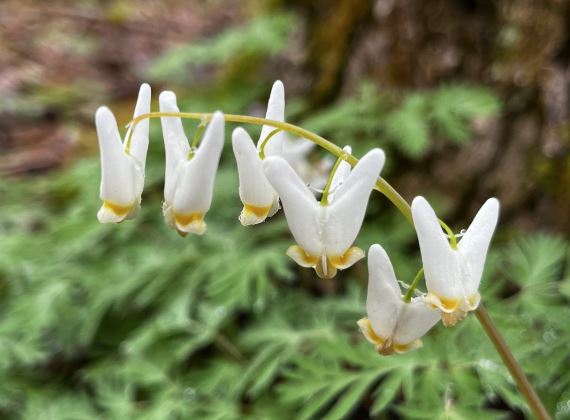
Caring for Spring Ephemerals in Your Garden
If you’re inspired to bring the magic of spring ephemerals to your own garden, let us help! Use these tips in your home garden.
Choose the Right Spot
Spring ephemerals thrive in part to full shade with rich, well-drained soil. Woodland gardens or areas beneath deciduous trees are ideal.
Plant in Clusters
For a naturalized effect, plant bulbs and perennials in clusters rather than singly. This mimics how they grow in the wild.
Avoid Disturbance
Once planted, resist the urge to dig or cultivate the soil where ephemerals grow. Their delicate roots need time to establish.
Pair with Summer Plants
Since ephemerals die back after blooming, pair them with later-emerging perennials to fill the space. Hostas, ferns, and astilbes are excellent companions.
From Our Garden to Yours
Spring ephemerals are a fleeting but unforgettable part of the gardening year. At Powell Gardens, they signal the start of the growing season and serve as a vital reminder of nature’s resilience and beauty.
We can’t wait to see you in the Gardens on the opening day of our 2025 season! Visit us starting March 1 to see these delicate blooms in action and celebrate the ephemeral wonders of the season.
Related Posts

